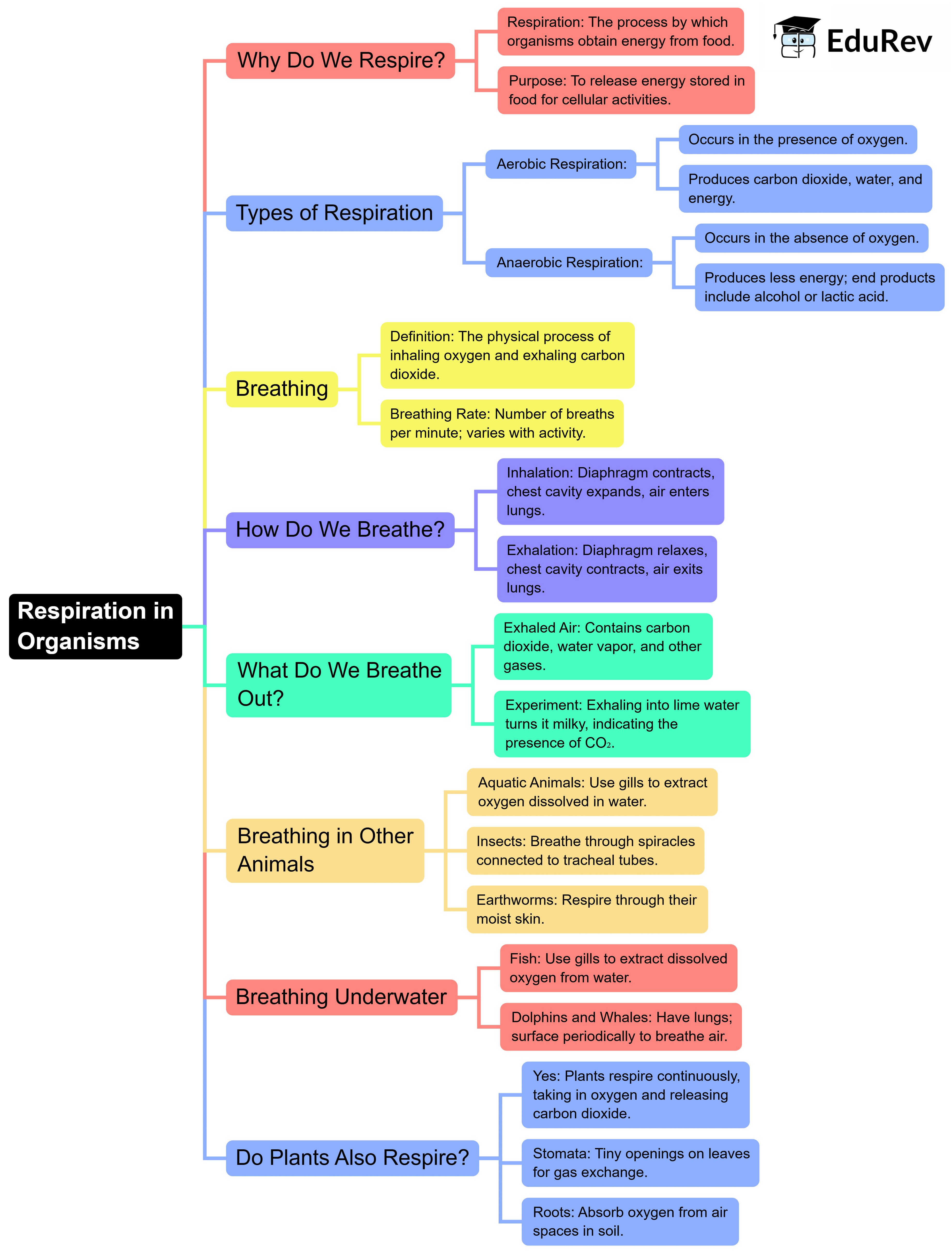Class 7 Exam > Class 7 Notes > Science Class 7 (Old NCERT) > Mind Map: Respiration in Organisms
Mind Map: Respiration in Organisms | Science Class 7 (Old NCERT) PDF Download

The document Mind Map: Respiration in Organisms | Science Class 7 (Old NCERT) is a part of the Class 7 Course Science Class 7 (Old NCERT).
All you need of Class 7 at this link: Class 7
|
111 videos|435 docs|28 tests
|
FAQs on Mind Map: Respiration in Organisms - Science Class 7 (Old NCERT)
| 1. What is respiration in organisms? |  |
Ans. Respiration in organisms is the process by which they obtain energy from the food they consume. It involves the exchange of gases, specifically the intake of oxygen and the release of carbon dioxide.
| 2. How does respiration occur in organisms? |  |
Ans. Respiration in organisms occurs through a series of steps. It begins with the inhalation of oxygen through the respiratory system, followed by the transport of oxygen to cells via the circulatory system. Inside the cells, oxygen combines with glucose molecules through a chemical reaction called cellular respiration, producing energy, water, and carbon dioxide.
| 3. What are the different types of respiration in organisms? |  |
Ans. There are two main types of respiration in organisms: aerobic respiration and anaerobic respiration. Aerobic respiration requires oxygen and is the most common form of respiration, occurring in most organisms. Anaerobic respiration, on the other hand, occurs in the absence of oxygen and is typically less efficient in terms of energy production.
| 4. How is respiration related to photosynthesis? |  |
Ans. Respiration and photosynthesis are closely interconnected processes. During photosynthesis, plants and some other organisms convert sunlight, carbon dioxide, and water into glucose and oxygen. The glucose produced in photosynthesis is then used as a fuel for respiration, where it combines with oxygen to release energy. In turn, respiration produces carbon dioxide, which is used by plants during photosynthesis.
| 5. What factors can affect respiration in organisms? |  |
Ans. Several factors can influence respiration in organisms. These include the availability of oxygen, temperature, physical activity levels, and metabolic rate. High altitudes, pollution, and certain medical conditions can also affect respiration. Additionally, the size and efficiency of an organism's respiratory system can impact its respiration process.
Related Searches
















